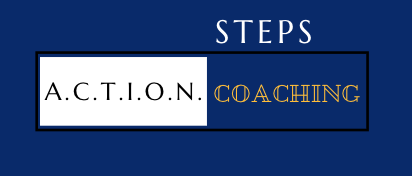
Strategies to Streamline Your Meetings and Boost Productivity
written by Dr. Melinda Zay MCC

In today’s fast-paced corporate world, navigating a sea of meetings has become a common challenge for managers, often leaving little room for actual work or strategic thinking. This article provides practical solutions for managers looking to optimize their time, enhance productivity, and foster professional growth. Discover actionable insights and reflective questions below to guide your self-coaching journey.
Reflective Questions to Assess your Time Management Style:
- Have you found your productivity hampered by an overwhelming number of meetings?
- What is the true cost of each meeting, considering factors like hourly rates and the number of participants?
- Do you struggle to focus on strategic priorities amidst a flood of non-essential meetings?
- Have you experienced increased stress or burnout due to a high volume of meetings?
- Do meetings sometimes lead to ineffective communication or fragmented discussions?
- Have you noticed a decline in team morale due to your frequent absence in meetings?
- Are valuable resources like time and personnel being excessively consumed by meetings?
- Do overloaded meeting schedules hinder your ability to make timely decisions?
- Have continuous meetings stifled your creative thinking and innovation?
- Is there limited time for personal development and skill-building due to overwhelming meetings?
If you’ve responded with a ‘yes’ to any of these questions, this article is tailored to provide you with effective strategies and valuable tips to overcome these challenges.
The Pareto Principle: Prioritizing Meeting Attendance
The Pareto Principle, also known as the 80/20 rule, suggests that 20% of your activities yield 80% of your results. Apply this principle to your meetings. Identify the meetings that contribute most to your goals, whether they involve strategic planning, key decision-making, or team collaboration. Prioritize these meetings and consider delegating or declining less impactful ones.
Reflective Questions:
- Do I regularly analyze which meetings contribute the most to my goals and objectives?
- Am I prioritizing and allocating more time and attention to meetings that align with the 20% of activities yielding 80% of results?
- Can I identify and categorize meetings as high-impact, moderate-impact, or low-impact to make more informed attendance decisions?
Cadence Check
Regularly assess the necessity of recurring meetings. Is the weekly status update really essential, or could it be replaced with a brief email or shared document? Reevaluate the cadence of meetings and consider moving to a bi-weekly or monthly schedule for some to free up valuable time.
Reflective Questions:
- Have I critically assessed the necessity of recurring meetings in my schedule?
- Am I open to replacing some meetings with more efficient communication methods, such as emails, shared documents, or brief updates?
- Have I explored alternative scheduling options, like bi-weekly or monthly meetings, to optimize my use of time and resources?
- How can you cut down on cadence, duration or number of people?
Efficient 1-on-1 Meetings
One-on-one meetings are crucial for coaching and building relationships with team members, but they can also become time-consuming. Encourage your team to come prepared with agendas and specific discussion points. Set time limits and aim for efficient, focused conversations. Use these meetings for goal setting, feedback, and development discussions.
Reflective Questions:
- Do my one-on-one meetings with team members consistently lead to productive discussions and meaningful outcomes?
- Have I communicated the importance of preparedness, clear agendas, and time limits to team members to enhance the efficiency of these meetings?
- Am I using one-on-one meetings primarily for their intended purposes, such as goal setting, feedback, and professional development?
Emotional Boundaries
Meetings can sometimes devolve into emotional dumping grounds, consuming time and energy. As a manager, establish clear guidelines for meetings. Encourage participants to stay focused on the agenda and save emotional or personal discussions for appropriate forums. This approach will help maintain professionalism and efficiency.
Reflective Questions:
- Have I experienced instances where meetings became unproductive due to emotional or personal discussions?
- Do I actively set and communicate boundaries to ensure meetings remain focused on their intended objectives?
- How can I maintain professionalism and create a more efficient meeting environment by addressing emotional topics separately and appropriately?
Empower Working Teams
Consider setting up working teams within your department or project teams. Each team can take on specific responsibilities, such as monitoring progress, coaching, or accountability. Empower team members to support each other and take on leadership roles, reducing the need for your direct involvement in every aspect.
Reflective Questions:
- Have I considered the benefits of delegating certain responsibilities and leadership roles within my team or project teams?
- Am I fostering an environment where team members can support each other and take ownership of specific tasks and initiatives?
- Can I explore the potential for working teams to handle monitoring, coaching, and accountability, reducing the need for my direct involvement in every aspect?
